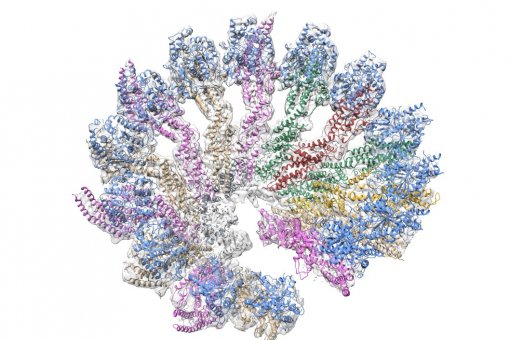Images
Contact

The multiple conformations of G-protein offer new possibilities to develop specific drugs.
Cells coexist with the environment that surrounds them and respond to all events that occur in that environment. G-proteins are often involved in the transmission of information from the extracellular matrix into the cell. These proteins have the capacity to interact with various molecules to trigger specific cell responses. IRB Barcelona researchers headed by Ernest Giralt, senior professor of the Department of Organic Chemistry at the University of Barcelona (UB), in collaboration with Rochester University, Brigham Young University and the UB, have revealed where the polyglot capacity of the G-protein lies. The study has been published in the journal Proceedings of the National Academies of Sciences (PNAS).
Three components commonly participate in shuttling information from the extracellular milieu into the cell. The first of these are GPCRs (G-protein-coupled receptors). These receptors are anchored to the membranes that surround cells and have an external part that binds to molecules and an internal part that communicates the signal. The second of these components, the G-proteins, which are located in the inner part of the membrane, detect the molecule-receptor binding and send orders to the third component of the cascade, namely the effector molecules that generate appropriate responses in each case. “Imagine that someone calls Mrs. Smith on her entry phone and announces that it is starting to rain. This someone would be the external molecule that binds to the receptor. The entry phone that communicates the outside with the inside would be the receptor that binds G-protein and Mrs. Smith would be the G-protein that pushes the button to wind up the awning. Finally, this button would be the effector molecule that, in this case, is responsible for winding up the awning”, explains Giralt.
The "dance" of the G-protein
One of the questions asked by scientists is how the G-protein has the capacity to generate distinct responses in function of the signals received. In this study the researchers show that the subunit βγ of the G-protein adopts a range of three-dimensional structures depending on the effector molecule to which it is bound. “The G-protein is like a dancer that changes shape depending on the partner she is dancing with”, says Giralt. The researchers believe that this variability in the three-dimensional structure leads to distinct cell responses depending on the context. To obtain these results, the scientists have used an innovative technique based on Nuclear Magnetic Resonance (NMR). The method provides a fingerprint of the energy of each of the atoms comprising the molecules. This new technique, previously developed in Giralt’s lab, has allowed the study of the structure and dynamics of the G-protein in solution, the natural state in which it is found inside cells.
Alterations in the transmission of information through G-proteins can cause cancer and inflammatory diseases. Until now, the drugs used to treat some of these diseases bind to GPCRs or to the receptor molecules. The future research will consist of deciphering the exact conformations adopted by G-protein and determining their number. This information would allow the development of new specific drugs to block responses that are harmful for the cell.
Nuria Noriega
Reference article:
NMR analysis of G-protein {beta}{gamma} subunit complexes reveals a dynamic G{alpha}-G{beta}{gamma} subunit interface and multiple protein recognition modes
Smrcka AV, Kichik N, Tarragó T, Burroughs M, Park MS, Itoga NK, Stern HA, Willardson BM, Giralt E.
Proc Natl Acad Sci U S A. 2009; doi:10.1073/pnas.0909503107
About IRB Barcelona
The Institute for Research in Biomedicine (IRB Barcelona) pursues a society free of disease. To this end, it conducts multidisciplinary research of excellence to cure cancer and other diseases linked to ageing. It establishes technology transfer agreements with the pharmaceutical industry and major hospitals to bring research results closer to society, and organises a range of science outreach activities to engage the public in an open dialogue. IRB Barcelona is an international centre that hosts 400 researchers and more than 30 nationalities. Recognised as a Severo Ochoa Centre of Excellence since 2011, IRB Barcelona is a CERCA centre and member of the Barcelona Institute of Science and Technology (BIST).




